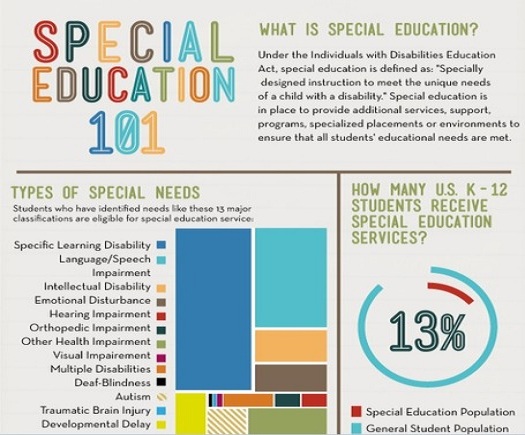Teachers: Essential Questions About Childhood Speech Disorders
Teachers are rarely in it for the money. Many list a desire to see kids succeed as their number one reason for teaching, despite the low wages. But some kids, such as those with childhood speech disorders, need a little extra help. Sometimes, the key to success in the classroom lies in making drastic changes, such as changing the entire physical landscape, as one school in Stockholm, Sweden did. When dealing with childhood speech disorders in the classroom, the best approach is collaboration. Because Open House nights rarely afford the opportunity for in-depth discussions with parents, teachers should instead schedule one-on-one meetings to discuss the child’s speech disorder. It’s also a good idea for teachers to meet with the child’s speech-language pathologist (SLP) to discuss how to best meet that child’s needs.
When you meet with the parents to discuss childhood speech disorders, here is a list of questions you might consider asking:
1. Can you tell me about Sarah’s speech disorder and what she struggles with?
If you’re familiar with childhood speech disorders, you might already know that dysarthria is a motor speech disorder that makes it difficult for the patient to manipulate oral motor muscles properly. However, every child is different, and will display different symptoms. Although you might be familiar with the clinical definition, the parents can explain what the speech disorder means for a particular child. Sarah, for example, might have to speak very softly at a slow rate, whereas Michael might speak rapidly, but mumble, although both of these kids may have dysarthria. Understanding what that child struggles with is the first step to helping him succeed in the classroom.
2. How can I phrase questions and directions so that they are easier for Jose to understand?
Some speech disordered children have trouble responding to open-ended questions. The parents might suggest “Yes” or “No” questions, or they may suggest offering the child a few answers to choose from. Other kids might have trouble processing information. They might do best when offered both written and verbal directions. So as you instruct your class to open their history books to page 93, write that instruction on the chalkboard.
As well, be mindful of multistep directions. Some kids with childhood speech disorders, such as those who have suffered a traumatic brain injury (TBI), struggle to process and remember multistep directions or any complex information. Break directions and information into smaller chunks that the child can grasp.
3. What are the salient points of your child’s IEP?
If the child has an Individualized Education Program (IEP), your school district should have provided you with a copy of the full document. (If not, ask for it.) However, it’s also a good idea to have a quick “cheat sheet” stapled to the front of the IEP for easy reference. Some parents might provide you with a bullet-style list of important points to remember, or you might need to request one. In addition to writing down the most important points of the IEP, write the parents’ and the speech therapist’s contact information on the cheat sheet, just in case.
4. What can I do to help your child succeed in my class?
Coping with childhood speech disorders in the classroom requires a bit of creativity. Beyond doing what is mandated in the IEP, Jose’s parents might have some ideas for engaging him in the classroom material and encouraging communication. For example, Jose might be absolutely infatuated with monster truck rallies. If the classroom assignment is to write a fictitious story, you might encourage Jose to write about monster trucks.
5. Can we set up a meeting with your child’s SLP?
Collaboration is critical for successfully addressing childhood speech disorders. If you meet with Sarah’s speech therapist, ask her any questions you still have about Sarah’s speech disorder. Ask the SLP about the speech therapy techniques she is using and the specific areas that they are currently working on. Sarah might be focusing on articulation practice for the “r” sound, for example. Consult with the SLP about how you can best communicate with Sarah and elicit responses from her.



